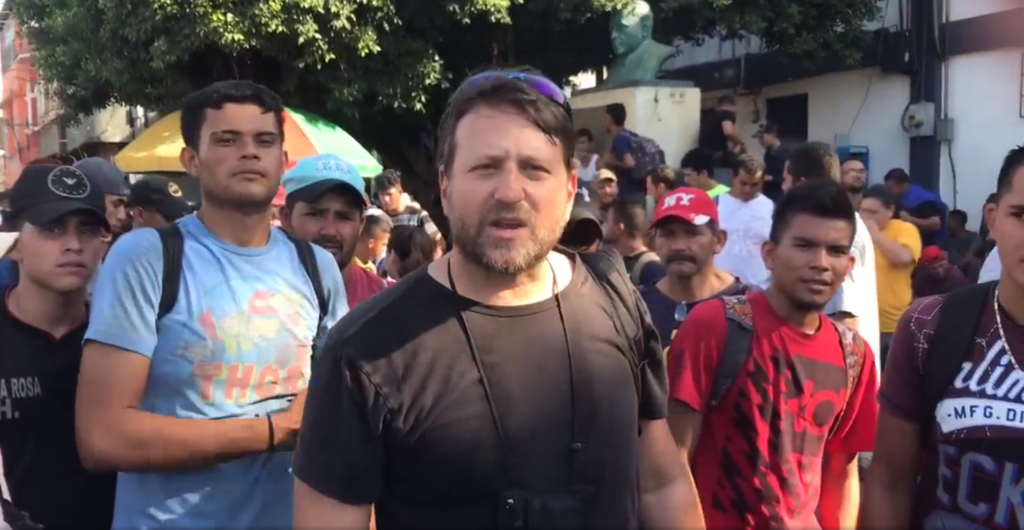Implementation of President Donald Trump’s cocktail of policies took time, with U.S. court challenges, trial and error, and planning necessities. But by the fall of 2019, the historic numbers of Central Americans crossing the U.S. border, to the tune of 100,000 a month — 144,000 in May 2019 alone — had plummeted to (still-high) pre-crisis levels. Understanding why is key to blunting future unwanted population transfers.
Video Report: How Trump’s Policies Ended the Mass Migration Crisis on Mexico’s Southern Border — For Now. Click below.

By Todd Bensman as originally published January 20, 2020 by the Center for Immigration Studies
In late 2018, President Donald Trump set in motion a cocktail of diplomatic and illegal immigration-control policies designed to end what had quickly become an epic flood of thousands of economic migrants from Central America that was crashing crashed the American southern border. Nearly a million successfully entered the United States.
It should now be openly declared, based on reporting among the migrants in Mexico and Guatemala, that President Trump can be credited with ending the mass illegal migration crisis of 2018-2019 on his volition and without the currently irascible, divided U.S. Congress. But the victory declaration comes with a caveat.
Absent permanent legislative prescriptions by that Congress, Trump’s success is tenuous and impermanent because, as this video report from Mexico’s southern border shows, it depends almost entirely on political winds in other countries, especially Mexico, and on the whims of their leaders.
The historic migrant river had first coursed unfettered over the key Guatemala-Mexico border, establishing that largely ungoverned landscape as an essential American interest and its second southern border that will have to be managed. The population transfer over it from Guatemala, El Salvador, and Honduras (and, lesser noted, from many other parts of the world) went on until President Trump, left by the U.S. Congress to dam it with only executive branch powers, ordered up innovative trial-and-error measures for both borders. These soon coincided with a precipitous decline in migration. What happened and why?
Understanding how the wave broke and why is essential to future responses to similar unwanted population transfers over the two southern borders, especially as new Central American migrant caravans form and set out to test the new defenses, as one is now and more will almost certainly later.
As things stand, the system Trump demanded and built will likely blunt this caravan. But the fragile parapet could also collapse at any moment on the Mexican president’s whim, absent more permanent bulwarks.
President Trump’s program was carefully tailored to remove the magnetizing incentives that influenced Central American migrant decisions to travel in the first place, especially the widespread discovery of a obscure U.S. legal rule that allowed foreigners who arrived with a child to be quickly released inside the United States and remain indefinitely by lodging asylum claims, even though almost all would be denied.
Several of the president’s initiatives were designed to dull that irresistible allure by forcing them to wait outside the country for the resolution of their claims, or to apply for asylum in Mexico or some other transit country along the way. For this to succeed, the president cajoled Mexico, mainly by threatening to damage its economy with trade tariffs, to start impeding the traffic over its own southern border with Guatemala. In the summer of 2019, Mexico acceded, inducing migrants to apply for legal residency in Mexico by threat of deportation and by having thousands of soldiers retard their use of roads and highways.
Implementation of the policy cocktail took time, with U.S. court challenges, trial and error, and planning necessities. But by the fall of 2019, the historic numbers of Central Americans crossing the U.S. border, to the tune of 100,000 a month — 144,000 in May 2019 alone — had plummeted to (still-high) pre-crisis levels.

It wasn’t immediately clear if the decline was caused by a seasonal hot-weather slow down or some other factor having little to do with policy directives. But as this report shows, the president’s ideas and demands on Mexico worked dramatically. Whether that success is lasting is an entirely other matter.